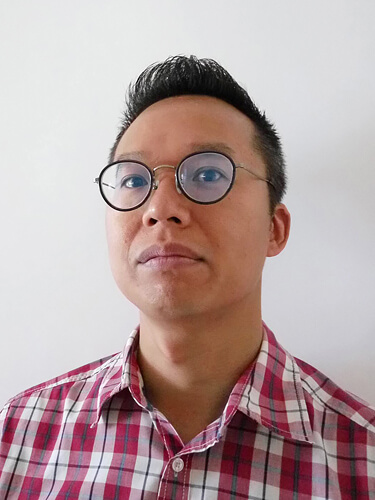Born 1975, and raised in Singapore, Zhou HanShun is a Photographic Artist, Printmaker and Art Director.
After graduating from Nanyang Academy of Fine Arts Singapore and RMIT University, he went on to make a living as an art director, and continues to pursue his passion as a visual storyteller and photographer.
He uses photography as a way to explore, investigate and document the culture and people in the cities he lived in.
HanShun has exhibited at the Tumbas Cultural Center in Thessaloniki, Greece for Photoeidolo (2017), the Molekyl Gallery in Sweden, for the Malmo Fotobiennal (2017), the Gallery under Theater in Bratislava, Slovakia for The Month of Photography Bratislava(2017), the Czech China Contemporary Museum in Beijing for the SongZhuang International Photo Biennale(2017), the PhotoMetria "Parallel Voices" exhibition in Greece (2016), the Addis FotoFest in Ethiopia (2016), among others.
HanShun was awarded a Special Mention at the Balkan Photo Festival (2016), Shortlisted for the Hariban Award (2017) and was a finalist of Photolucida Critical Mass (2016), among others.
About Frenetic City
To say life moves fast in a city is an understatement.
People go through life in an uncompromising, chaotic pace,
overcoming and absorbing anything in their path.
Time in the city seem to flow quicker, memories in the city
tend to fade away faster.
Nothing seems to stand still in a city.
I use photography as a way to explore, investigate and document the culture, society and people in the cities that I have lived in.
Using Hong Kong as a starting point, this project aims to be a documentation of our increasingly overpopulated world.
When I first landed, I was immediately confronted by a society that is in fierce competition for physical and mental space.
I decided to capture and re-create the tension and chaos that I experienced in photographic form, using multiple exposures on B&W negatives.
The creation of each photograph requires me to be fixed at a specific location from between 5 to 7 hours per session. Through the viewfinder of an old Hasselblad, I created each photograph by overlapping selected individuals or groups of people within the 6 x 6 frame.
The resulting photograph is not of a singular moment in time, but a multitude of moments in time captured in a single frame.
